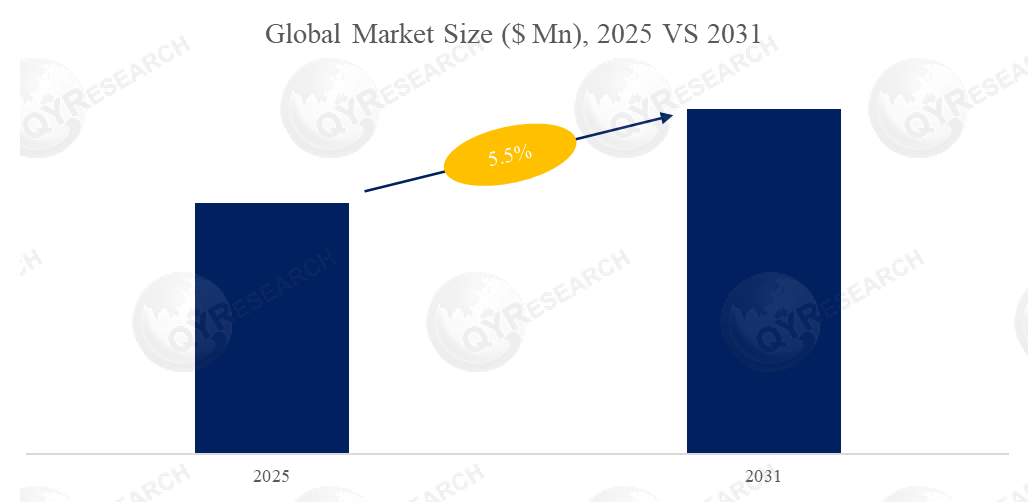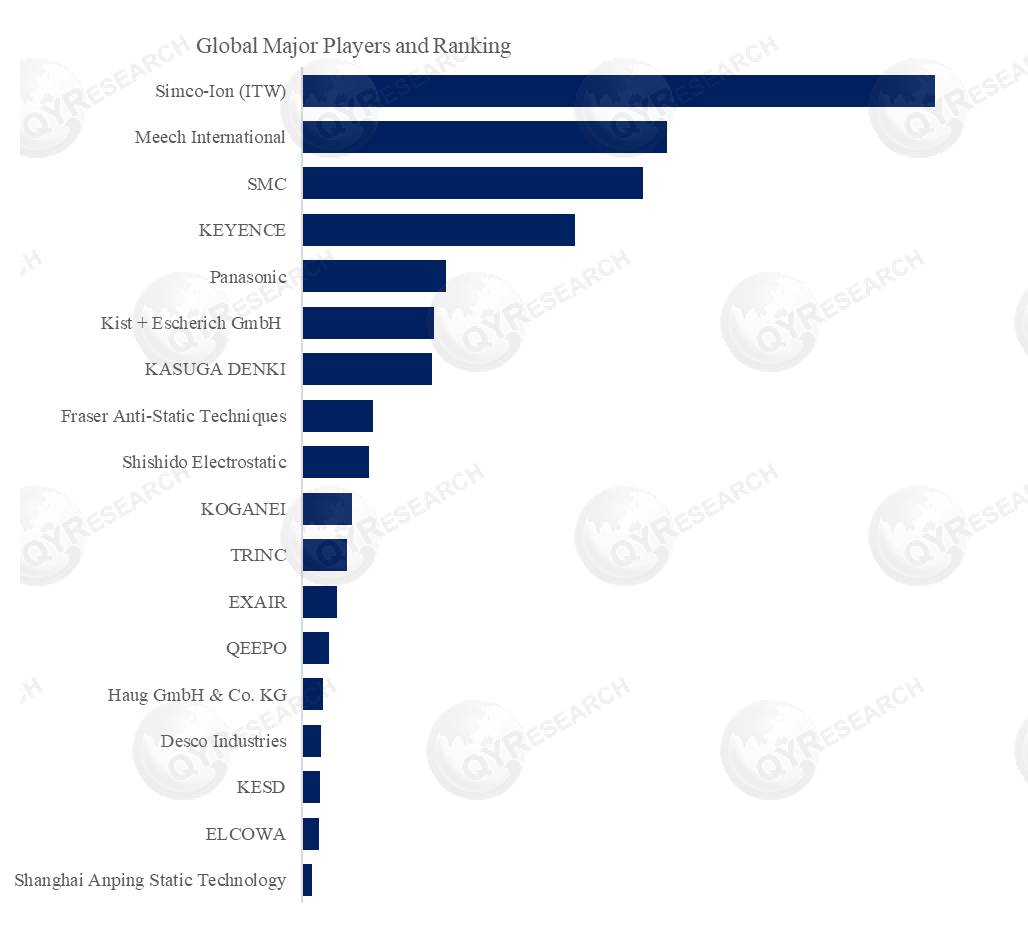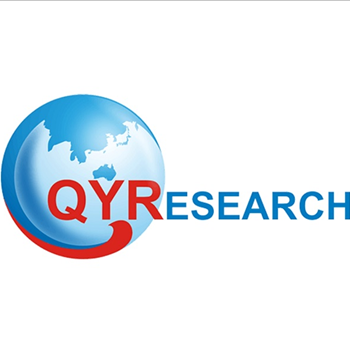Right Now
Electrostatic Cleaning Equipment for Automotive and Medical Device Research Report
Electrostatic Cleaning Equipment for Automotive and Medical Device Industries mainly studies electrostatic dust removal equipment used in the production process of automobiles and medical devices. This equipment generally has two functions: static elimination and dust removal.
Market Drivers:
Stringent Cleanliness Standard: In the automotive sector, precision components like engine parts, sensors, and electronic control units require particle-free surfaces before assembly or coating. In the medical device industry, regulatory bodies (e.g., FDA, ISO 13485) mandate extremely high levels of cleanliness to ensure product safety and biocompatibility.
Miniaturization and Complexity of Components: The growing use of miniaturized electronics in cars (e.g., ADAS, EV power electronics) and intricate medical devices (e.g., implants, catheters, diagnostic tools) demands non-contact, residue-free cleaning. Electrostatic systems can remove dust, fibers, and static charges from hard-to-reach surfaces without damaging sensitive components.
Shift Toward Dry, Chemical-Free Cleaning Processes: Both industries are under pressure to reduce the use of solvents and water in cleaning due to environmental, safety, and cost concerns. Electrostatic cleaning is a dry, eco-friendly solution that aligns with sustainability goals and reduces waste and energy use.
Rise of Electric Vehicles (EVs) and Electronics: EV batteries, inverters, and PCBs require precision cleaning to prevent electrical failures and enhance thermal performance. Electrostatic cleaning equipment is increasingly integrated into EV production lines to maintain performance and yield.
Automation and Inline Integration: With manufacturing becoming more automated, electrostatic cleaning equipment can be seamlessly integrated into robotic and conveyor systems. This supports higher throughput, lower labor costs, and consistent quality, key in both high-volume automotive plants and cleanroom-based medical manufacturing.
Market Challenges
High Initial Investment and Cost of Ownership: Electrostatic cleaning systems—especially those designed for cleanroom or precision environments—require expensive equipment, infrastructure, and maintenance. Small- to mid-sized manufacturers may hesitate to adopt due to the upfront costs and specialized requirements.
Technical Complexity and Integration Difficulties: Integrating electrostatic cleaning equipment into existing production lines or automated workflows (e.g., robotic arms or conveyors) can be challenging. It often requires custom design, careful calibration, and expertise to ensure effective particle removal without affecting product integrity.
Sensitivity of Components to Electrostatic Discharge (ESD): While electrostatic cleaning is designed to remove particles using charge differentials, improperly configured systems can generate damaging ESD—especially risky for automotive electronics (e.g., ECUs, sensors) or delicate medical devices (e.g., catheters, implantable electronics).
Limited Standardization and Certification Guidelines: Unlike traditional solvent-based or ultrasonic cleaning methods, electrostatic cleaning lacks widely adopted industry standards. This creates challenges in validation, quality assurance, and compliance, especially in regulated environments like medical device manufacturing.
Lack of Skilled Operators and Technical Support: Operating and maintaining electrostatic cleaning systems requires specialized knowledge in electrostatics, airflow control, and contamination science. The shortage of skilled technicians in certain regions or factories can lead to underperformance or improper use.
Competing Cleaning Technologies: Ultrasonic, plasma, and CO₂-based cleaning systems compete with electrostatic methods, each with their own strengths in different applications. In some use cases, buyers may prefer wet or chemical cleaning due to familiarity or better performance on organic residues.
According to the new market research report “Electrostatic Cleaning Equipment for Automotive and Medical Device - Global Market Share and Ranking, Overall Sales and Demand Forecast 2025-2031”, published by QYResearch, the global Electrostatic Cleaning Equipment for Automotive and Medical Device Industries market size is projected to reach USD 0.13 billion by 2031, at a CAGR of 5.5% during the forecast period.
Figure00001. Global Electrostatic Cleaning Equipment for Automotive and Medical Device Industries Market Size (US$ Million), 2020-2031

Source: QYResearch, "Electrostatic Cleaning Equipment for Automotive and Medical Device - Global Market Share and Ranking, Overall Sales and Demand Forecast 2025-2031”
Figure00002. Global Electrostatic Cleaning Equipment for Automotive and Medical Device Industries Top 18 Players Ranking and Market Share (Ranking is based on the revenue of 2024, continually updated)

Source: QYResearch, "Electrostatic Cleaning Equipment for Automotive and Medical Device - Global Market Share and Ranking, Overall Sales and Demand Forecast 2025-2031”
According to QYResearch Top Players Research Center, the global key manufacturers of Electrostatic Cleaning Equipment for Automotive and Medical Device Industries include Simco-Ion (ITW), Meech International, SMC, KEYENCE, Panasonic, Kist + Escherich GmbH , KASUGA DENKI, Fraser Anti-Static Techniques, Shishido Electrostatic, KOGANEI, etc. In 2024, the global top 10 players had a share approximately 61.0% in terms of revenue.
In terms of product type, currently Air Guns is the largest segment, hold a share of 44.4%.
In terms of product application, currently Automotive is the largest segment, hold a share of 63.8%.
About The Authors
Liu Wang- Lead Author |
Email: wangliu@qyresearch.com Tel: +86 15755356372 |
Ms. Wang has 7 years of industry research experience. She focuses on research related to the industry chain of automotive, consumer goods, software, and services, including auto parts, advanced automotive materials, various popular software, etc. Some research topics include Automotive Air Conditioning Electric Scroll Compressors, Lithium Battery Aluminum Plastic Film, Model-based Development (MBD), Predictive Maintenance Solutions, Webtoons, 3D models, Cloud Gaming Backend Service, Visual Content, DHA from Algae, etc. As an analyst with many years of experience in the consulting industry, she has a keen insight into the industry's market trends and developments and uses data analysis to discover potential market opportunities and threats, providing data support for corporate strategic decisions. |
About QYResearch
QYResearch founded in California, USA in 2007.It is a leading global market research and consulting company. With over 17 years’ experience and professional research team in various cities over the world QY Research focuses on management consulting, database and seminar services, IPO consulting (data is widely cited in prospectuses, annual reports and presentations), industry chain research and customized research to help our clients in providing non-linear revenue model and make them successful. We are globally recognized for our expansive portfolio of services, good corporate citizenship, and our strong commitment to sustainability. Up to now, we have cooperated with more than 60,000 clients across five continents. Let’s work closely with you and build a bold and better future.
QYResearch is a world-renowned large-scale consulting company. The industry covers various high-tech industry chain market segments, spanning the semiconductor industry chain (semiconductor equipment and parts, semiconductor materials, ICs, Foundry, packaging and testing, discrete devices, sensors, optoelectronic devices), photovoltaic industry chain (equipment, cells, modules, auxiliary material brackets, inverters, power station terminals), new energy automobile industry chain (batteries and materials, auto parts, batteries, motors, electronic control, automotive semiconductors, etc.), communication industry chain (communication system equipment, terminal equipment, electronic components, RF front-end, optical modules, 4G/5G/6G, broadband, IoT, digital economy, AI), advanced materials industry Chain (metal materials, polymer materials, ceramic materials, nano materials, etc.), machinery manufacturing industry chain (CNC machine tools, construction machinery, electrical machinery, 3C automation, industrial robots, lasers, industrial control, drones), food, beverages and pharmaceuticals, medical equipment, agriculture, etc.
Contact Us:
If you have any queries regarding this report or if you would like further information, please contact us:
QY Research Inc.
Add: 17890 Castleton Street Suite 369 City of Industry CA 91748 United States
E-mail: global@qyresearch.com
Tel: 001-626-842-1666(US) 0086-133 1872 9947(CN)
More Posts



















Report This Post
Please complete the following requested information to flag this post and report abuse, or offensive content. Your report will be reviewed within 24 hours. We will take appropriate action as described in Findit terms of use.


